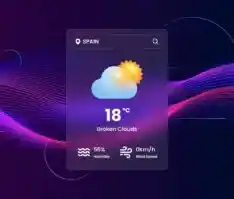HR Forecasting: 5 Innovative Approaches to Accelerate Workforce Planning Growth
Table of Contents
In the landscape of modern business, the ability to not just respond to change but to anticipate it gives organizations a definitive edge. HR Forecasting is a strategic imperative that equips businesses with the foresight needed to navigate the complexities of talent management in an unpredictable market. By predicting staffing needs, talent shortages, and workforce trends, HR Forecasting enables organizations to make proactive decisions, ensuring they are always one step ahead.
Importance of HR Forecasting in Modern Business
HR Forecasting is not merely a process—it’s a strategic framework that aligns the workforce with the future direction of the company. It is crucial for several reasons:
- Talent Alignment: It ensures that the right people are in the right roles at the right time, aligned with the company’s future needs and strategic goals.
- Cost Management: By forecasting hiring needs, companies can avoid the excessive costs associated with last-minute recruiting drives or the financial strain of overstaffing.
- Risk Mitigation: It helps in anticipating and managing risks associated with talent gaps, market changes, and economic fluctuations.
- Agility and Competitiveness: In a fast-paced business environment, the ability to quickly adapt to change is vital. HR Forecasting enables this agility, keeping companies competitive.
- Diversity and Inclusion: Forecasting can help to identify opportunities for creating a more diverse and inclusive workforce, which is increasingly recognized as a driver of innovation and performance.
Impact of Effective Workforce Planning on Organizational Growth
Effective workforce planning, underpinned by robust HR Forecasting, has a direct and profound impact on organizational growth:
- Strategic Workforce Optimization: Effective planning ensures that organizations are neither understaffed nor overstaffed but are operating at an optimal level to deliver on their business objectives.
- Enhanced Employee Engagement: When workforce planning is done right, employees are better utilized, feel more valued, and are given opportunities to grow, leading to higher engagement and productivity.
- Future-Readiness: Organizations with effective workforce planning can anticipate and prepare for future skills requirements, enabling them to remain relevant and forward-thinking.
- Innovation: With insights gained from forecasting, companies can better foster an environment where the right talent is in place to drive innovation.
- Business Continuity: By foreseeing potential disruptions and having plans in place, businesses can ensure continuity and the ability to maintain operations under various scenarios.
HR Forecasting is a vital activity that supports the strategic direction of an organization. By leveraging accurate forecasts in workforce planning, businesses can achieve growth, maintain competitive advantage, and secure their position in the marketplace for the long term.

1.Utilizing Predictive Analytics in HR Forecasting
Predictive Analysis: Predictive analytics in HR Forecasting involves using data, statistical algorithms, and machine learning techniques to identify the likelihood of future outcomes based on historical data. In HR, this means analyzing current and past employee data to predict future HR needs and trends, such as hiring requirements, turnover rates, and employee performance outcomes.
Case Studies
- TechCorp’s Turnover Reduction: TechCorp, a software company, implemented predictive analytics to address high turnover rates. By analyzing patterns from exit interviews and employee satisfaction surveys, they were able to identify key factors that were leading to employee departures. With targeted retention strategies, TechCorp reduced its turnover rate by 25% within a year.
- HealthCare Inc.’s Staffing Optimization: HealthCare Inc. used predictive analytics to forecast patient inflow and aligned its staffing accordingly. The data helped them predict busy periods, allowing them to staff nurses and doctors more efficiently, reducing both understaffing and overstaffing issues.
How to Implement in Workforce Planning
- Establish Clear Objectives: Define what you want to achieve with predictive analytics, whether it’s reducing turnover, optimizing staffing, or improving employee performance.
- Data Collection and Management: Gather relevant HR data, ensure its quality, and maintain a centralized database for easy access and analysis.
- Choose the Right Tools: Invest in predictive analytics software that can handle large datasets and complex algorithms, and that suits your specific objectives.
- Integrate Insights into HR Processes: Use the insights gained from predictive analytics to inform HR processes. For example, if the data predicts a high turnover in a department, HR can investigate and address the underlying causes.
- Continuous Monitoring and Refinement: Continuously monitor the accuracy of predictions and refine your models and strategies accordingly.
Incorporating predictive analytics into HR Forecasting is a strategic move that can lead to significant improvements in workforce planning. By forecasting future trends and needs, HR departments can become more proactive and strategic, contributing directly to the growth and success of their organizations.
2.Integrating AI and Machine Learning in HR Forecasting
The Role of AI and ML in Enhancing Forecasting Accuracy
Artificial Intelligence (AI) and Machine Learning (ML) have significantly elevated the accuracy of HR Forecasting. AI algorithms can process vast quantities of data and identify trends that would be imperceptible to the human eye. ML takes this a step further by learning from this data over time, refining its algorithms to make more accurate predictions based on new information.
The integration of AI and ML in HR Forecasting allows for:
- Advanced Pattern Recognition: Detecting complex patterns in employee behavior, productivity, and other HR-related metrics.
- Predictive Modelling: Creating models that can forecast future workforce trends, such as demand for certain skills or turnover rates.
- Natural Language Processing (NLP): Understanding and analyzing employee feedback from surveys and other text sources to gain insights into employee sentiment and engagement.
Real-world Applications
- Global Retail Chain: A global retail chain implemented ML algorithms to predict seasonal staffing needs. By analyzing sales data, local economic indicators, and historical staffing patterns, the company could accurately forecast the number of temporary workers needed for each store, optimizing their workforce ahead of peak shopping periods.
- Financial Services Firm: A financial services firm used AI to predict the success of job candidates during the recruitment process. The AI assessed applicants’ resumes and performance in assessment tests against the profiles of high-performing existing employees, improving the quality of new hires.
Steps for Integration
- Assess HR Data Infrastructure: Evaluate if current HR systems can support AI and ML technology. Data should be accurate, accessible, and clean.
- Define Specific Use Cases: Identify specific HR challenges or opportunities where AI and ML can make a significant impact, such as recruitment, employee retention, or performance management.
- Select Suitable AI and ML Tools: Choose AI and ML tools that align with your HR objectives and integrate well with existing HR systems.
- Collaborate with IT and Data Science Teams: Work closely with IT and data science teams to ensure the proper implementation of AI and ML technologies.
Incorporating AI and ML into HR Forecasting can significantly increase precision in workforce planning, leading to more strategic and informed decision-making. These technologies, when used correctly, have the potential to transform HR from a support function into a strategic powerhouse, driving organizational growth and competitive advantage.

3. Embracing a Data-Driven Culture in HR Forecasting
Cultivating a Data-Oriented Mindset in HR
Incorporating a data-driven culture within HR is pivotal for effective HR Forecasting. This requires HR professionals to shift from making decisions based primarily on intuition or experience to relying on data-derived insights. Cultivating this mindset entails:
- Education and Training: Equipping HR professionals with the necessary skills to interpret and leverage data effectively.
- Leadership Buy-In: Ensuring that leadership understands and supports the use of data in HR decisions.
- Data Accessibility: Making relevant data easily accessible to HR staff, encouraging them to use data in their day-to-day decision-making.
Methods for Data Collection and Analysis
- Integrated HR Systems: Implement systems that can collect a wide range of HR metrics from various points, such as recruitment, performance, turnover, and employee engagement.
- Surveys and Feedback Tools: Regularly collect data through surveys and feedback tools to gauge employee sentiment and satisfaction.
- Analytics Tools: Utilize advanced HR analytics tools that can process and analyze large datasets, identifying trends and patterns that inform forecasting.
Impact on Workforce Planning Strategies
- Improving Accuracy: Data-driven decisions are typically more accurate and can significantly reduce the risk of costly misjudgments in workforce planning.
- Enhancing Responsiveness: Real-time data allows HR to respond swiftly to changing workforce dynamics, keeping the organization agile.
- Forecasting Future Needs: By understanding current data trends, HR can more accurately forecast future workforce needs and develop strategies to meet those demands.
4. Fostering Agile Workforce Planning with HR Forecasting
Agile Methodologies in HR Forecasting
Incorporating agile methodologies into HR Forecasting means adopting flexible, iterative approaches that allow for quick adaptation to changing workforce needs. This strategy involves:
- Short Forecasting Cycles: Instead of annual forecasting, agile HR departments perform more frequent forecasting cycles. This allows for adjustments to be made in real-time, adapting to changes swiftly.
- Cross-functional Collaboration: Agile workforce planning thrives on collaboration across different departments, enabling a multi-faceted view of workforce dynamics.
- Employee Involvement: Agile forecasting includes feedback from employees, incorporating their insights into workforce planning to ensure it meets their needs and the company’s goals.
Benefits of Agility in Planning
The benefits of incorporating agility into HR Forecasting include:
- Resilience: Agile workforce planning builds resilience into the workforce, enabling the organization to withstand and adapt to unexpected events.
- Competitive Advantage: It allows organizations to capitalize on opportunities more quickly than competitors.
- Employee Retention: Agile environments often respond faster to employee needs, which can increase satisfaction and retention.
5. Continuous Learning and Development (L&D) in HR Forecasting
The Importance of L&D in Workforce Sustainability
A sustainable workforce is one that continually evolves its skill set to meet current and future demands. Continuous L&D is vital for:
- Maintaining Skill Relevance: Ensuring that the workforce’s skills do not become obsolete in the face of industry changes.
- Career Pathing: Providing employees with clear pathways for growth, which is essential for motivation and retention.
- Adaptive Capacity: Building an organization’s capacity to adapt to new technologies and market shifts.
Case Study on L&D and HR Forecasting Synergy
TechForward Inc., a leading player in the tech industry, recognized early on that the digital transformation wave would significantly impact the skills required for their workforce to remain competitive. They also understood that emerging technologies like artificial intelligence (AI) and cloud computing would be pivotal in their sector in the near future.
Challenge:
The challenge was to preemptively close the emerging skills gap, particularly in AI and cloud domains, to ensure that TechForward Inc. remained at the forefront of the technological frontier.
HR Forecasting Approach:
- Talent Audits: Reviewing current workforce skills against future technology trends highlighted by industry reports.
- Employee Surveys: Understanding the workforce’s career aspirations and readiness to engage in new learning opportunities.
- Market Analysis: Assessing the availability of the required skills in the labor market to determine the need for in-house training versus hiring.
L&D Strategy Implementation:
Based on the HR Forecasting data, TechForward Inc. took a multi-pronged approach to L&D:
- Partnerships with Educational Institutions: They collaborated with universities to create tailored courses in AI and cloud computing for their employees.
- Internal Mentorship Programs: Established a mentorship program where tech-savvy employees trained their peers in emerging technologies.
- Online Learning Platforms: Subscribed to online courses and encouraged employees to earn certifications in specific tech fields, supported by a learning incentive program.
Outcomes:
- Upskilled 40% of their workforce in AI and cloud computing, significantly above the industry average.
- Reduced external recruitment costs by 25%, as they were able to fill most of the new tech positions internally.
- Saw a 15% increase in employee retention, as employees valued the company’s investment in their career development.
TechForward Inc.’s case exemplifies how HR Forecasting can effectively inform and drive a company’s L&D strategy. By anticipating the skills needed for the future and investing in their employees, TechForward Inc. not only prepared its workforce for upcoming challenges but also positioned itself as a desirable employer for top talent.

Conclusion
HR Forecasting is not just about filling gaps; it’s about envisioning the future of work and proactively sculpting the workforce to thrive in it. It’s a strategic function that feeds into every aspect of HR from talent acquisition and retention to development and succession planning. Organizations that harness the power of HR Forecasting are better equipped to grow, adapt, and compete in a fast-paced, ever-changing global market.
By embracing the strategies discussed, organizations can ensure that their workforce planning is not just reactive, but predictive and strategic, laying the foundation for continuous growth and long-term success.
Featured Insights
 Integrating Real-Time Weather Data into Your Travel and Navigation App
Integrating Real-Time Weather Data into Your Travel and Navigation App The Future is Now: AI and ML Technologies Reshaping Healthcare
The Future is Now: AI and ML Technologies Reshaping Healthcare Introduction to Digital Twin Technology in Manufacturing with Unprecedented Efficiency and Innovation
Introduction to Digital Twin Technology in Manufacturing with Unprecedented Efficiency and Innovation Adobe’s Firefly AI: New Tools for Photoshop and Illustrator
Adobe’s Firefly AI: New Tools for Photoshop and Illustrator Introducing Meta Imagine Me: Your Digital Doppelganger
Introducing Meta Imagine Me: Your Digital Doppelganger AI in Gaming is Transforming the Industry
AI in Gaming is Transforming the Industry